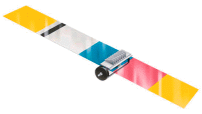|
Feature: Printing Photos
A look at Photo Printing
|
An Overview to printing Photos
Until recently, the only way for an amateur photographer to produce photo realistic prints, was to use an expensive dye-sublimation printer. Fortunately today’s inkjet printers have made tremendous advances in image quality, thanks mainly to the determined efforts of the top inkjet companies like Canon, Epson and HP. Also dye sublimation costs have tumbled and laboratory quality photographs can now be produced from dye sublimation equipment costing less than £100 in just minutes.
Laser Printers may be used to print photographs but anyone who is serious about their results will want to use a high quality inkjet printer, or better still, a dye sublimation printer. In summary:
How does it work?
Near photo-quality inkjet printers start at less than £100, allowing amateurs, whether casual or serious, to experience professional quality photos within their budgets. If you are intending to purchase a photo inkjet printer, look for the terms “photo realistic” or “photo-quality” when you shop for a CMYK or CcMmYK printer model. These stand for Cyan – Magenta – Yellow – blacK and Cyan – Photo cyan –Magenta – Photo magenta – Yellow – blacK respectively. Some manufacturers refer to their Photo Cyan and the Photo Magenta, as Light Cyan and Light Magenta. These colours are used to build up (via the dithering process – for details, see “How Inkjet Printers Work”) an image on the printed page; hence Epson four colour printers are referred to as CMYK and their six colour printers as CcMmYK.
Why the extra colours?
Theoretically, any colour can be created just by mixing CMY inks in differing proportions. In practice, however, the darker colours towards 'true Black' can look “muddy”, and so the blacK ink is used too. Also pale colours can be difficult. Dithering helps to produce them, but the resolution is often poor, so additional light colours may be used. Most commonly, light cyan and light magenta, are added to the customary cyan, magenta, yellow and black, to help to produce a smooth colour gradient and detailed light areas, and, in combination with a high resolution setting, the CcMmYK system outputs some excellent prints. Because the colour cartridge has five colours instead of the more usual three, with the extra two (Light Cyan and Light Magenta) being used to print light shades without decreasing dot density, the “graininess” is much reduced.
Dye Sublimation Printers
For many years dye-sublimation printers were specialist devices widely used in demanding graphic arts and photographic applications. The advent of digital photography led to the technology entering the mainstream, forming the basis of many of the standalone, portable photo printers that emerged in the second half of the 1990s. The printing process used by true dye-sublimation printers differs from that of inkjets. Instead of spraying jets of ink onto a page as inkjet printers do, dye-sublimation printers apply a dye from a plastic film. This takes the form of a either a roll or a ribbon, similar to that used by thermal wax printers, usually containing consecutive panels of cyan, magenta, yellow and black dye.
The transfer film passes across a thermal print head consisting of thousands of heating elements. The heat causes the dyes on the film to sublimate – that is, turn from a solid to a gas without a liquid phase in between – and the gaseous dyes are absorbed by the printing paper. The amount of dye actually transferred is controlled by varying the intensity and duration of the heat.
When the ink is absorbed by the paper it tends to diffuse, blurring the edges. This diffusion helps the printer create continuous tones of  colour as a result of the “dots” of ink blending together. Dye-sublimation printers employ a three-pass system, layering cyan, magenta and yellow dyes on top of one another. They then add a clear coat to seal and protect the print against UV light, fingerprints, and even water! There is no smudging, running, or blotching; prints are dry and ready to touch the instant they come out of the printer! Whilst this is capable of producing excellent results, it is surprisingly economical compared to standard ink jet costs of photo printing. Even if a particular image needs practically none of one of the pigments, that ribbon segment is still consumed. colour as a result of the “dots” of ink blending together. Dye-sublimation printers employ a three-pass system, layering cyan, magenta and yellow dyes on top of one another. They then add a clear coat to seal and protect the print against UV light, fingerprints, and even water! There is no smudging, running, or blotching; prints are dry and ready to touch the instant they come out of the printer! Whilst this is capable of producing excellent results, it is surprisingly economical compared to standard ink jet costs of photo printing. Even if a particular image needs practically none of one of the pigments, that ribbon segment is still consumed.
A dye sublimation printer works by volatilising a coloured wax to a special receptor paper in a series of dots. The print head is capable of producing 256 levels of each colour. Each dot is printed in three colours of varying intensity, these are Yellow, Magenta and Cyan, and so each dot can have any one of 16 million colours (24-bit). This gives a very fine finish, which in the 300 dpi printers is indistinguishable from a good photographic print and the 200 dpi printers still produce excellent pictures where the individual dots cannot be seen by the naked eye at normal viewing distance.
|